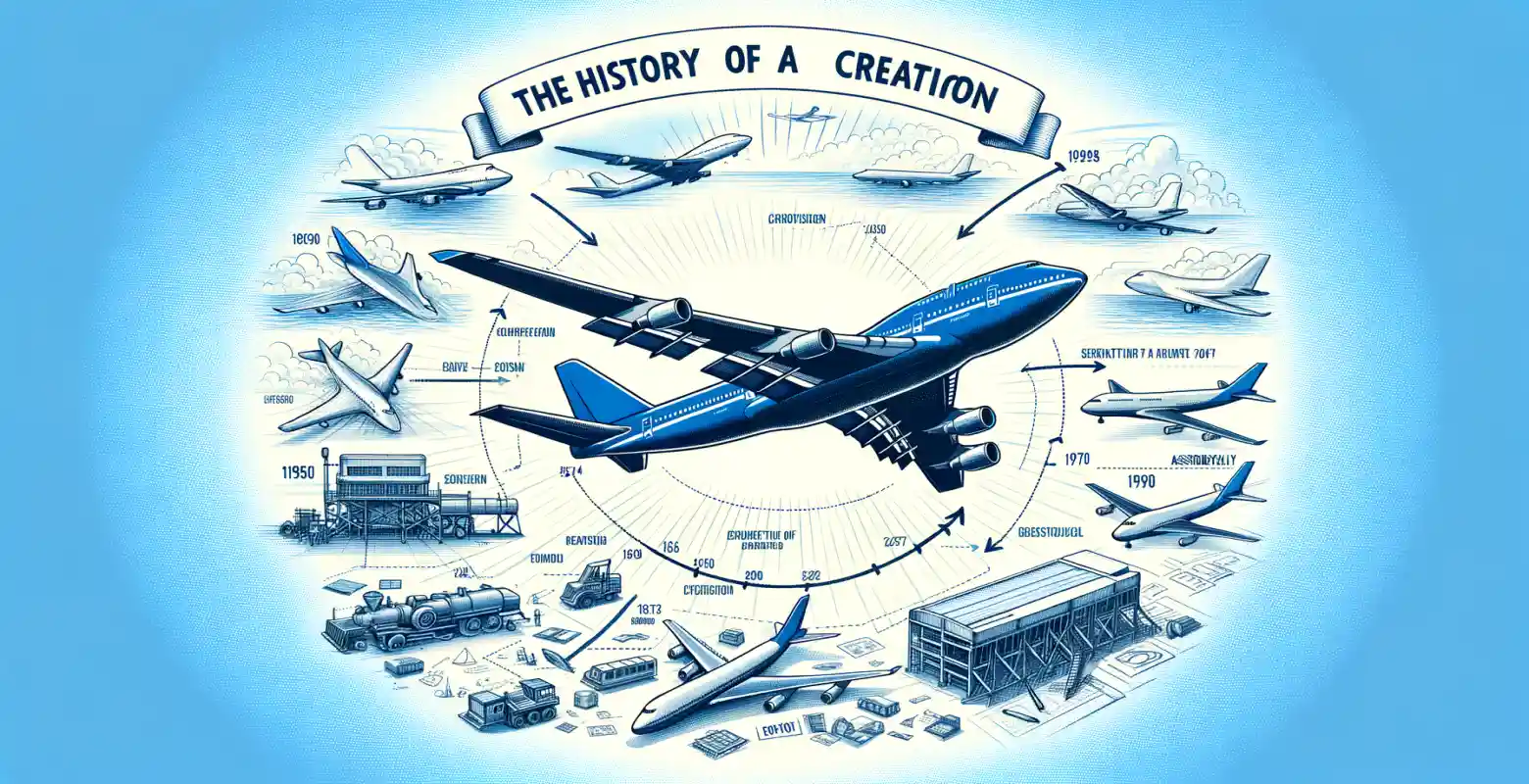The history of the creation of the Boeing 747 - the airplane that changed the world
Introduction
The Boeing 747, also known as the "Jumbo Jet," is an icon of aviation that revolutionized the way we travel the world. Since its debut in 1969, this powerful aircraft has become a symbol of globalization and the accessibility of air travel for the masses. Why is the Boeing 747 so important? Its introduction to the market marked a breakthrough in aviation technology, enabling the transportation of a greater number of passengers over longer distances at lower costs. In this article, we will delve into the history of the creation of this extraordinary aircraft, its impact on the aviation industry, and the future of this legendary model.
Beginnings and the Concept of the Boeing 747
The history of the Boeing 747 begins in the 1960s when Pan Am, one of the leading airlines of that time, approached Boeing with a request to develop a new aircraft that could carry more passengers than existing models. The main goal was to reduce operational costs per passenger and increase the efficiency of transatlantic flights.
Work on the project began in 1966, with engineer Joe Sutter playing a key role in the development of the Boeing 747 as the head of the design team. It is worth noting that the design of the new aircraft was revolutionary not only in terms of its size but also in its innovative technological applications, such as having two decks and wings with a large span.
Technical Aspects of the Design
The Boeing 747 was designed as a wide-body aircraft with two decks, which was an innovation on a global scale. The upper deck was initially intended to serve as a lounge for first-class passengers, but later became a seating area for additional passengers.
The aircraft was powered by four Pratt & Whitney JT9D turbofan engines, providing it with adequate power to cover long distances. The size and range of the Boeing 747 allowed for the transportation of up to 550 passengers, depending on the configuration.
Other technical innovations included advanced navigation systems and modern avionics, which enhanced the safety and comfort of the flight.
Debut and First Flights
The official debut of the Boeing 747 took place on February 9, 1969, when the aircraft took off for the first time. The initial test flights were successful, paving the way for the certification and commercialization of the model.
The first airline to introduce the Boeing 747 into its fleet was Pan Am, which operated the first commercial flight from New York to London in January 1970. This flight became a symbol of a new era in passenger aviation, and the Boeing 747 was acclaimed as the "king of the skies."
Impact on the Aviation Industry
The introduction of the Boeing 747 to the market had a tremendous impact on the aviation industry. This aircraft enabled carriers to offer cheaper tickets due to the increased number of seats and lower operational costs per passenger. This, in turn, led to a growth in the number of passengers using air travel.
The Boeing 747 also became a popular choice for long-haul flights, allowing airlines to explore new markets and routes. The aircraft was also used for cargo transport, increasing its versatility and commercial appeal.
Challenges and Competition
Despite its success, the Boeing 747 faced numerous challenges. In the 1970s and 1980s, competition emerged in the form of smaller and more economical aircraft, such as the Airbus A300. Oil crises and rising fuel costs also affected the profitability of operating larger aircraft.
In response to these challenges, Boeing introduced subsequent versions of the 747, such as the 747-400, which were more fuel-efficient and equipped with modern avionics. Nevertheless, technological advancements and changing needs in the aviation market required manufacturers to continually adapt to new realities.
Future of the Boeing 747
While many airlines began phasing out the Boeing 747 in favor of more modern and economical models, such as the Boeing 787 Dreamliner or Airbus A350, the 747 still remains in service in various roles. It is used as a cargo aircraft, for military purposes, and for special missions such as transporting heads of state (Air Force One).
Boeing announced the end of 747 production in 2022, marking the end of an era in aviation. Nevertheless, the legacy of this aircraft remains alive, and its impact on the aviation industry is immeasurable.
Summary
The Boeing 747 is not just an aircraft but also a symbol of technological progress and globalization. Its introduction to the market changed the face of air travel, making it more accessible and affordable for the masses. While the era of the 747 is slowly coming to an end, its legacy will continue to inspire future generations of engineers and aviation enthusiasts. Its history reminds us of how innovations can transform our lives and open up new horizons.






Number of comments: 0